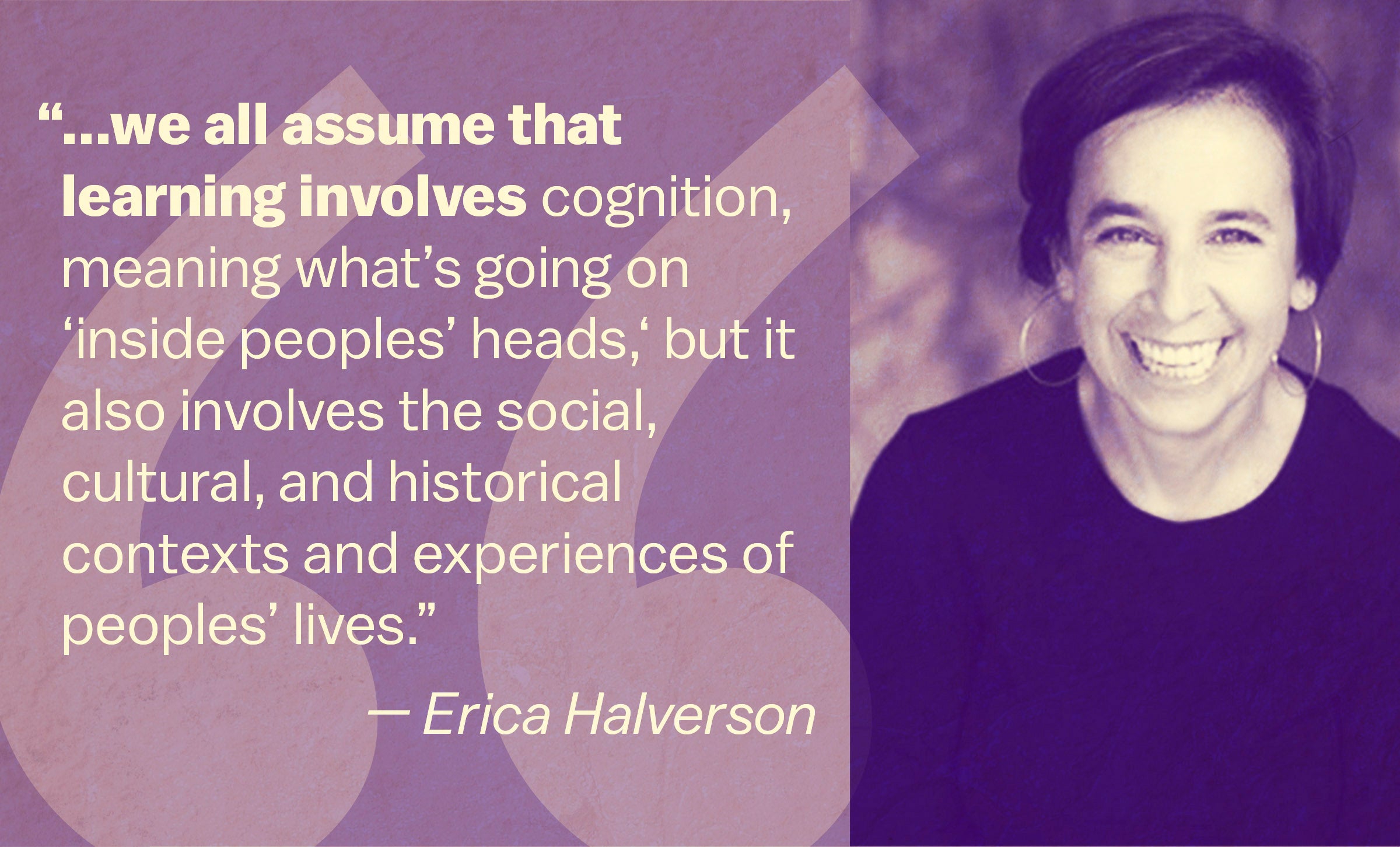For decades, arts educators and researchers have debated the purpose and value of arts education—specifically, whether its worth lies in enhancing academic achievement in other subjects or in being valued for its own intrinsic merits.
Rather than assessing the benefits of arts learning for young people as either “art for art’s sake” or “art for academic’s sake,” arts learning expert Kylie Peppler and her research team at the University of California, Irvine asked, “What if learning about or practicing an art could help young people connect more directly to their communities and the world they live in?”
The team identifies five approaches for Connected Arts Learning that emerged from its literature review and follow-up interviews with arts education leaders. The leaders selected already took some variation of the Connected Arts Learning approach in their programs.

There’s something fulfilling about thinking about how artistic practice can enter into the classroom or enter their lives or how students can see it in a different way.
The five approaches are:
- Culturally sustaining arts: Puts a community’s culture at the center of arts experiences
- Future forward arts: Prepares youth for future workforce or civic participation
- Networked arts: Embeds art in networks including families, educators, and working artists
- Doing well by doing art: Supports participants’ health and well-being through art
- Youth voice arts: Emphasizes youth perspectives, leadership, and activism
A series of case studies shows how five organizations each exemplified one of the approaches. The team also states that these approaches are not mutually exclusive. Organizations might use a combination of the five or add an approach of their own.

The authors of the report quote Mark Diaz, associate director of education at the Chicago Arts Partnerships in Education, which is one of the case study organizations: “There’s something fulfilling about thinking about how artistic practice can enter into the classroom or enter their lives or how students can see it in a different way. So it’s not about making pretty pictures, but it’s about engaging with issues that are important to them and how to connect those things that are part of their curriculum.”
To see how two musicians are using the framework to engage young people and help them discover their identities and communities, listen to this podcast.




